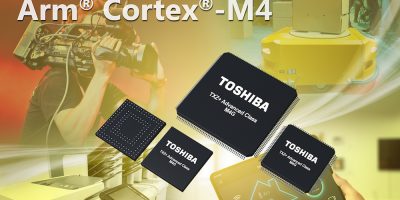Rapid prototyping of customisable FPGA architectures is automated with the latest tool from QuickLogic. The Australis embedded FPGA (eFPGA) IP Generator integrates QuickLogic’s best practices for performance, power, and area optimisation, said the company, to ensure low risk and low cost for eFPGA IP licensees
Its automation capability enables custom-parameterised eFPGA IP is available rapidly – within days in some cases, said the company.
Interest in domain-specific devices has been increased as the industry faces severe semiconductor supply constraints and difficulties keeping up with Moore’s Law, said QuickLogic. This is typically an expensive course for system developers and they may take longer to develop and may introduce risk. Integrating embedded FPGA technology can mitigate these risk but the fact that they are conventionally tied to a particular foundry and process node can deter developers. QuickLogic says Australis addresses these issues by giving developers the ability to customise eFPGA IP quickly and cost- effectively.
It is based on the OpenFPGA IP generator and adds additional features and capabilities specific to implementing QuickLogic’s eFPGA IP, along with testing and support required to build commercially-viable eFPGA IP.
It can provide ASIC/SoC developers a highly automated way to define and implement customised eFPGA IP. Embedded FPGA enables reprogrammable use, so that devices can address changing market conditions, support the evolution of new standards with the same silicon, customise implementations for IP protection, offload and accelerate hardware for artificial intelligence / machine learning (AI / ML) or it can be used to create a range of product variants for small, niche or fragmented markets.
Australis provides customised eFPGA IP, from description to GDSII format in days and can meet specific Soc design requirements, such as being optimised for power, performance and area requirements.
According to QuickLogic, IP is a fraction of the cost of traditionally-built eFPGA IP cores.
In addition, a broad range of foundries and processes is supported, so developers can choose the best fab and technology for a given application.
ASIC / SoC and FPGA user tool support ensure seamless integration of the IP, continued QuickLogic.
The Australis eFPGA IP Generator is available now.
QuickLogic is a fabless semiconductor company that develops low power, multi-core semiconductor platforms and IP for artificial intelligence (AI), voice and sensor processing. The company offers embedded FPGA IP (eFPGA) for hardware acceleration and pre-processing, and heterogeneous multi-core SoCs that integrate eFPGA with other processors and peripherals. There is also the Analytics Toolkit, following the acquisition of SensiML, offering sensor algorithms using AI technology. Markets served include AI, voice, and sensor processing across mobile, wearable, hearable, consumer, industrial, edge and endpoint IoT.






